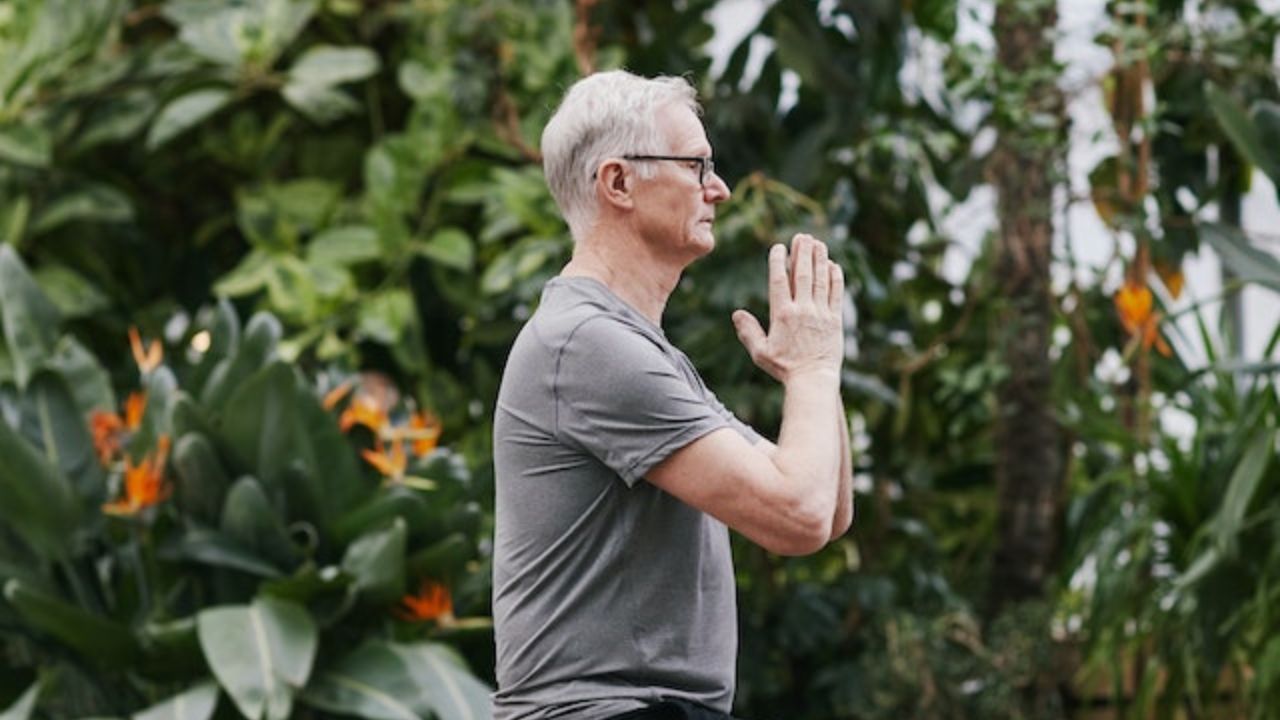
As we gracefully age, it becomes increasingly important to prioritize our physical well-being. Incorporating age-friendly fitness routines into our daily lives can not only enhance our golden years but also promote overall health and vitality.
In this article, we will explore the top 11 fitness routines specifically designed for seniors. From low-impact cardiovascular exercises to strength training and mind-body practices like yoga and tai chi, these routines are tailored to support your physical and mental well-being, ensuring a life of freedom, independence, and wellness.
Low-Impact Cardiovascular Exercises
One of the most effective ways to maintain cardiovascular health without putting excessive strain on the joints is by incorporating at least three low-impact cardiovascular exercises into your fitness routine.
Low-impact exercises are gentle on the joints, making them an excellent choice for individuals who desire freedom from joint pain and discomfort.
For seniors, low-impact strength training and aquatic exercises are particularly beneficial.
Low-impact strength training involves using resistance bands, light weights, or bodyweight exercises to build strength and improve cardiovascular fitness without placing excessive stress on the joints.
Aquatic exercises, such as swimming or water aerobics, provide a supportive and buoyant environment that reduces the impact on the joints while still providing an effective cardiovascular workout.
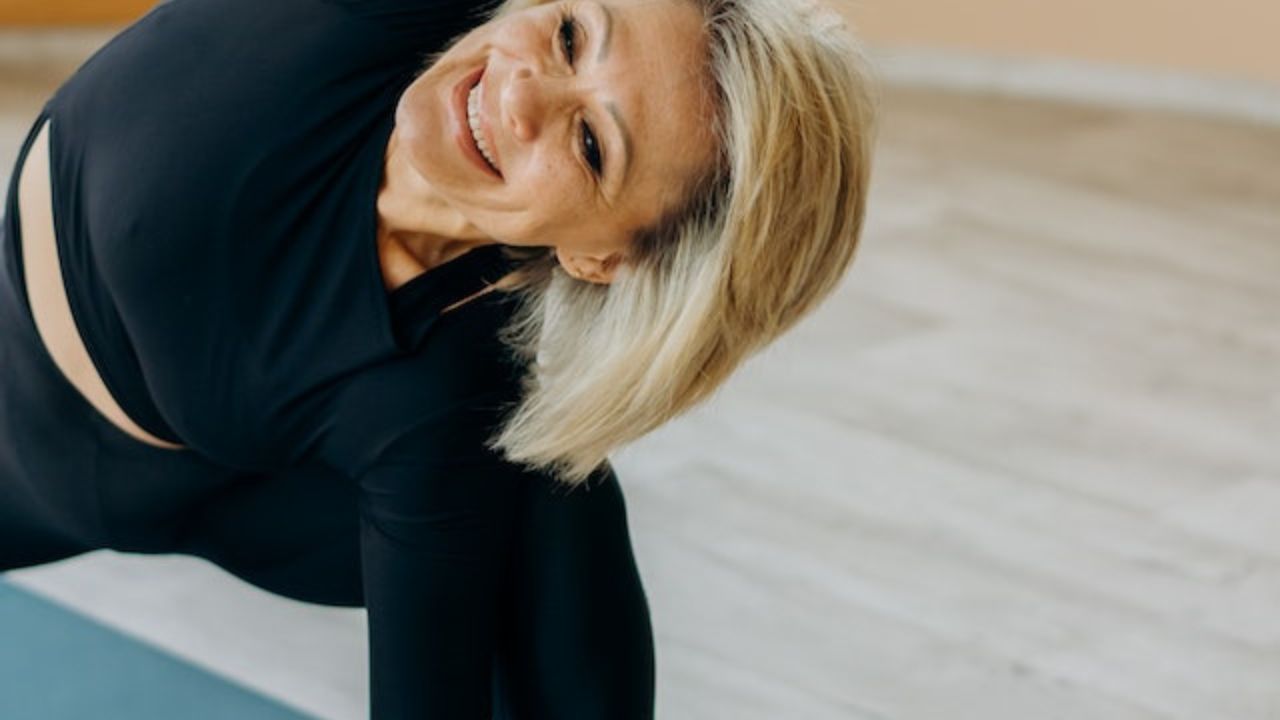
Strength Training for Seniors
Strength training is an essential component of fitness for seniors as it offers numerous benefits. It helps maintain muscle mass, increases bone density, improves balance and stability, and enhances overall physical functioning.
When it comes to strength training for seniors, it is crucial to focus on safe exercises that target major muscle groups while considering any existing health conditions or limitations.
Benefits of Strength Training
When considering the benefits of incorporating strength training into a senior's fitness routine, it is important to focus on the improvements it can provide in terms of overall health and longevity. Strength training offers numerous benefits for seniors, including:
- Increased muscle strength and endurance, which can help with daily activities and reduce the risk of falls.
- Improved bone density, reducing the risk of osteoporosis and fractures.
- Enhanced joint flexibility and range of motion, promoting better mobility and independence.
- Boosted metabolism and weight management, as muscle mass increases and burns more calories.
By engaging in regular strength training exercises, seniors can experience a higher quality of life, maintain their independence, and enjoy the freedom to engage in various activities.
It is crucial to consult with a healthcare professional or a certified trainer to develop a personalized strength training program that suits an individual's needs and abilities.
Safe Exercises for Seniors
The article highlights safe exercises for seniors, providing valuable information on how to incorporate strength training into their fitness routine. As we age, maintaining strength and balance becomes increasingly important for fall prevention and overall well-being.
Regular exercise can help seniors build muscle mass, increase bone density, and improve coordination, reducing the risk of falls and injuries. It is essential to choose exercises that are safe and suitable for seniors, considering their physical abilities and any existing health conditions.
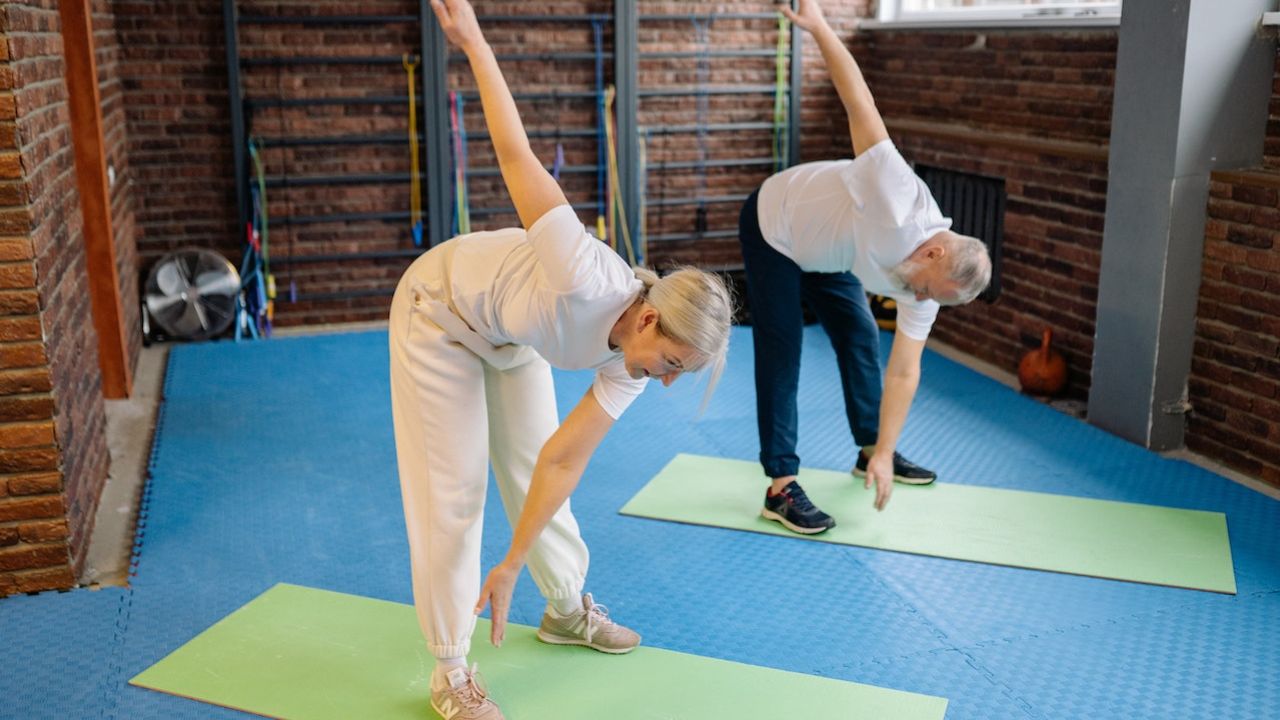
Some recommended exercises include chair squats, wall push-ups, standing leg lifts, and seated resistance band exercises. These exercises can be easily incorporated into a home workout routine, allowing seniors to stay active and improve their strength and balance in the comfort of their own homes.
Yoga for Flexibility and Balance
Yoga is a gentle and effective exercise that can greatly benefit seniors by improving flexibility and balance. The practice involves a series of controlled movements and poses that help to stretch and strengthen muscles, promoting better mobility and stability.
Incorporating yoga into a fitness routine can be a valuable tool for seniors looking to maintain or enhance their physical capabilities.
Gentle Movements for Seniors
Utilizing gentle movements specifically designed for seniors can significantly enhance flexibility and balance in older individuals. As we age, it becomes increasingly important to prioritize our physical well-being. Incorporating gentle exercises into our daily routine can not only improve our overall health, but also provide a sense of freedom and independence.
Here are some age-friendly fitness routines that can benefit seniors:
- Chair yoga: This form of yoga is modified to be done while sitting on a chair, making it accessible for individuals with limited mobility.
- Aquatic exercises: Water provides a low-impact environment that reduces strain on joints, making it ideal for seniors looking to improve their strength and flexibility.
- Tai chi: This ancient Chinese practice focuses on slow, flowing movements that improve balance, coordination, and flexibility.
- Stretching: Simple stretching exercises can help seniors maintain flexibility and prevent muscle stiffness.
Strengthening Muscles With Yoga
Incorporating gentle movements like chair yoga or aquatic exercises can effectively strengthen muscles and improve flexibility and balance. Yoga for seniors is a popular and beneficial practice that focuses on joint health and overall well-being.
As we age, it becomes increasingly important to maintain muscle strength and flexibility to support our joints and prevent injury. Yoga offers a low-impact option for seniors to engage in regular physical activity without putting excessive strain on their bodies. By practicing yoga regularly, seniors can strengthen their muscles, improve joint mobility, and enhance their overall physical function.
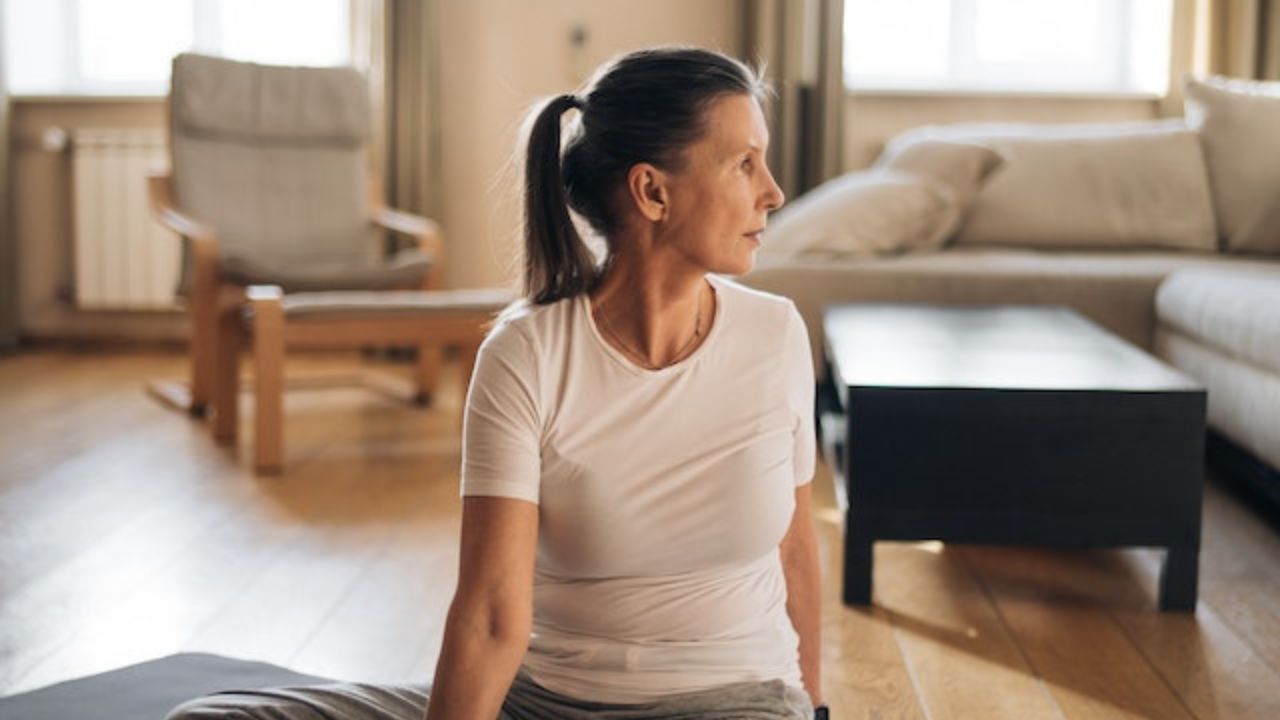
The gentle movements and stretches in yoga help to increase blood flow and reduce inflammation in the joints, promoting joint health and reducing the risk of conditions like arthritis. Additionally, yoga can improve balance and stability, reducing the risk of falls and injuries.
Pilates for Core Strength
To improve overall stability and balance, consider incorporating Pilates exercises that focus on building core strength. Pilates is a low-impact form of exercise that is particularly beneficial for older adults. It helps improve flexibility, posture, and muscle tone while reducing the risk of injury. Here are four key benefits of incorporating Pilates into your fitness routine:
Improved balance: Pilates exercises engage the core muscles, which are essential for maintaining balance and stability. Strengthening these muscles can help prevent falls and improve overall mobility.
Increased flexibility: Pilates incorporates dynamic stretching movements that can help improve flexibility and joint mobility. This can be especially beneficial for seniors who may experience stiffness or limited range of motion.
Better posture: Pilates exercises focus on proper alignment and postural awareness, which can help improve posture and reduce back and neck pain.
Enhanced overall strength: Pilates targets not only the core muscles but also the muscles in the arms, legs, and back. This comprehensive approach can help seniors maintain overall strength and functional fitness as they age.
Incorporating Pilates into your fitness routine can provide numerous benefits for seniors, including improved balance, flexibility, posture, and overall strength. By focusing on core strength exercises designed specifically for older adults, you can enhance your physical well-being and enjoy the freedom of movement in your golden years.
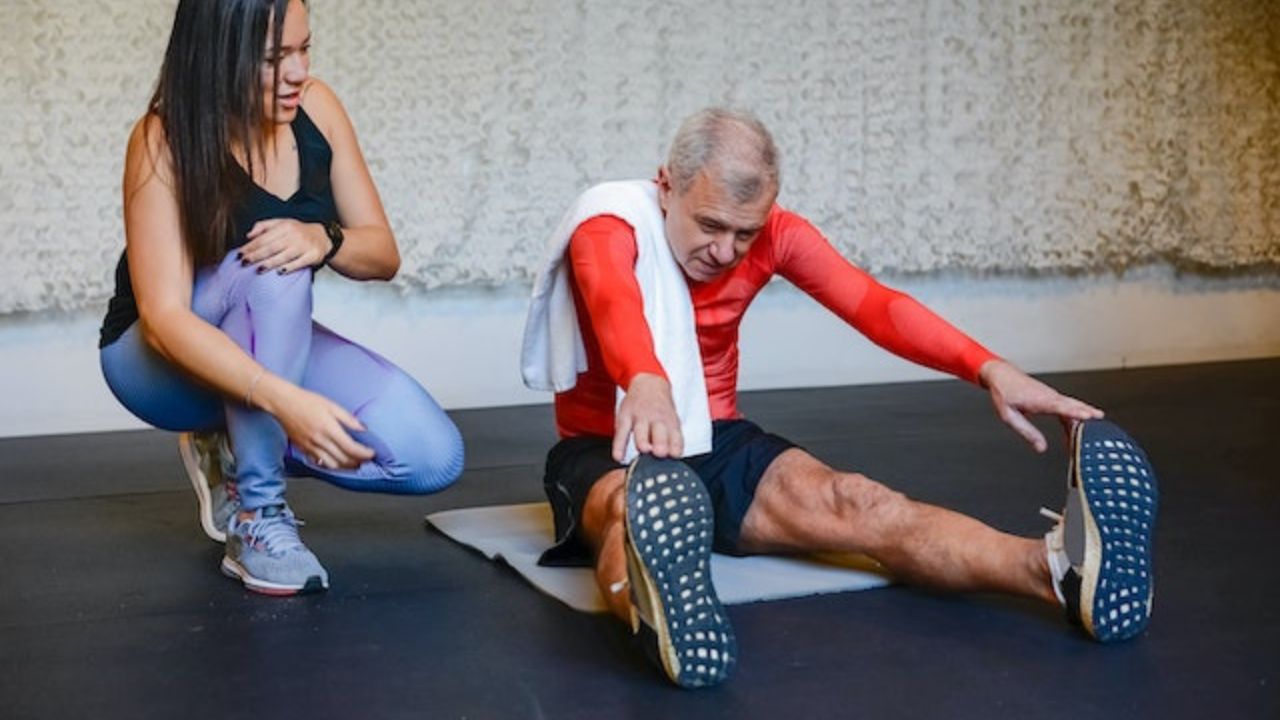
Tai Chi for Mind-Body Connection
Tai Chi is a gentle and flowing form of exercise that focuses on the mind-body connection. It combines slow and deliberate movements with deep breathing and meditation to promote balance and coordination.
Regular practice of Tai Chi can also help reduce stress, promote relaxation, and improve mental clarity.
Balance and Coordination
The article explores the importance of maintaining balance and coordination in older adults for improved overall wellness and discusses various exercises and techniques to enhance these skills.
As we age, our balance and coordination naturally decline, increasing the risk of falls and injuries. However, by incorporating specific exercises into our daily routine, we can improve these skills and maintain our independence.
Here are some key exercises and techniques to consider:
- Tai Chi: This ancient Chinese practice focuses on slow, controlled movements that help improve balance and coordination.
- Yoga: This gentle form of exercise enhances flexibility, strength, and balance.
- Standing on one leg: Simply standing on one leg for a few seconds at a time can help improve balance and stability.
- Proprioception exercises: These exercises focus on body awareness and include activities like standing on foam pads or using balance boards.
Stress Relief and Relaxation
During times of stress and anxiety, incorporating daily mindfulness practices like practicing Tai Chi can provide a much-needed break for relaxation and mental rejuvenation.
Stress management is crucial for maintaining overall well-being, and mindfulness techniques offer effective tools to manage stress and promote a sense of calm. Tai Chi, a gentle and flowing form of exercise, combines physical movement with deep breathing and focused attention, making it an ideal practice for reducing stress.
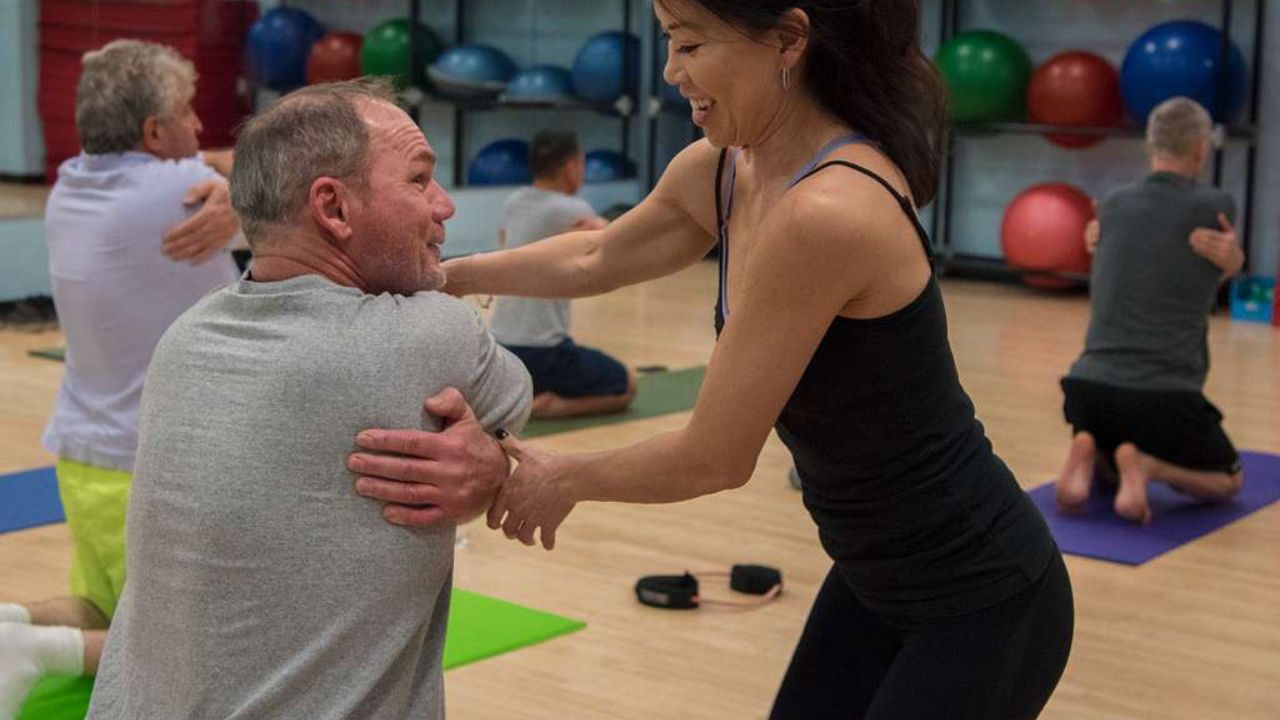
By engaging in Tai Chi regularly, individuals can experience improved stress management, reduced anxiety levels, and enhanced mental clarity. This ancient practice not only helps to calm the mind but also strengthens the body, improving balance, flexibility, and overall physical health.
Incorporating mindfulness practices like Tai Chi into daily routines can lead to greater peace and tranquility, enabling individuals to navigate the challenges of life with resilience and freedom.
Improves Mental Clarity
Engaging in regular Tai Chi practice enhances mental clarity and fosters a stronger mind-body connection. This ancient Chinese martial art combines flowing movements, deep breathing, and meditation, resulting in numerous cognitive benefits.
Here are four ways that Tai Chi can improve cognitive function and enhance memory:
Reduces stress and anxiety: Tai Chi promotes relaxation and mindfulness, which can alleviate stress and anxiety. This, in turn, improves cognitive performance and memory recall.
Increases focus and attention: The slow and deliberate movements of Tai Chi require concentration and mental focus. Regular practice can enhance attention span and improve cognitive abilities.
Enhances neuroplasticity: Tai Chi has been found to increase the production of brain-derived neurotrophic factor (BDNF), a protein that supports the growth and survival of neurons. This can improve cognitive function and enhance memory.
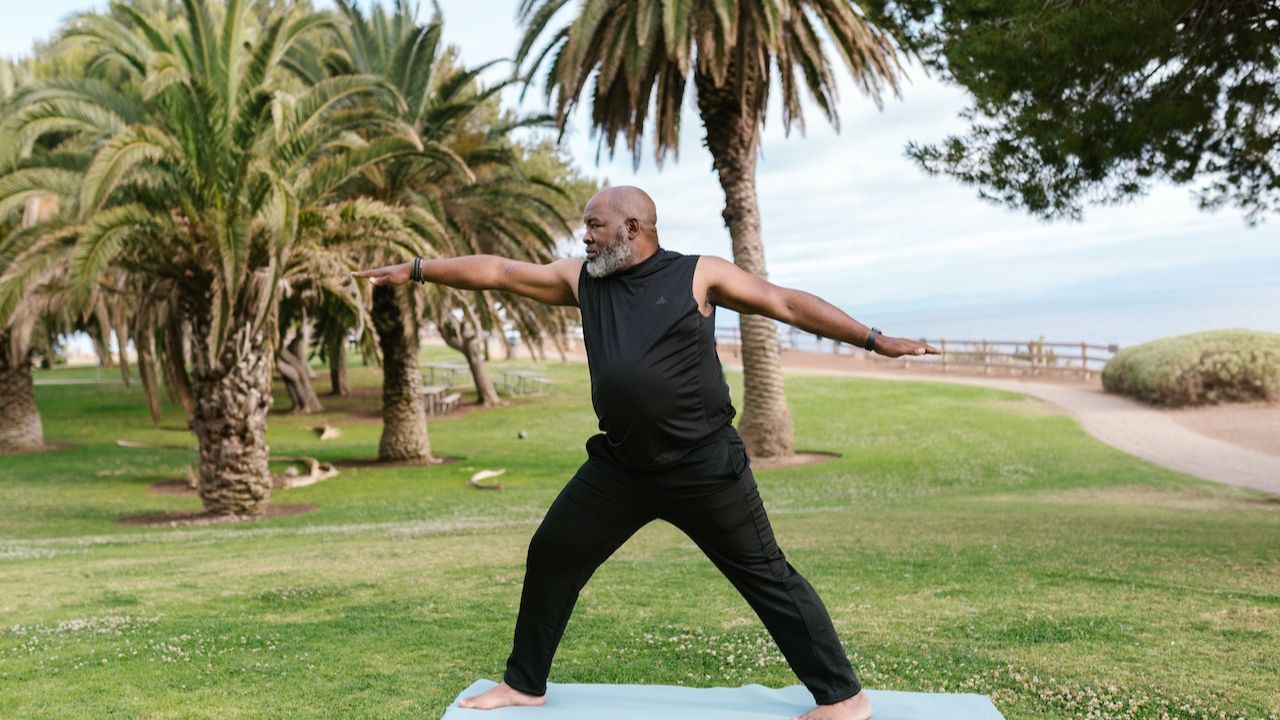
Improves executive function: Tai Chi involves coordinating movements with breath control, which enhances executive functions such as planning, problem-solving, and decision-making.
Water Aerobics for Joint Support
One of the eleven age-friendly fitness routines that can significantly enhance joint support in your golden years is engaging in water aerobics.
Water aerobics is a low-impact exercise that provides a multitude of benefits for joint health. The water's buoyancy reduces the impact on your joints, making it an ideal exercise for those with arthritis or joint pain.
The water resistance also helps to strengthen the muscles surrounding the joints, providing additional support and stability. Additionally, water aerobics improves flexibility and range of motion, helping to alleviate stiffness and improve joint mobility.
Not only does water aerobics benefit joint health, but it also provides a refreshing and enjoyable workout experience. So, dive into the pool and experience the freedom of movement and the soothing effects of water aerobics on your joints.
Chair Exercises for Limited Mobility
While limited mobility may pose challenges for individuals, incorporating chair exercises into their fitness routine can provide a safe and effective way to improve strength and flexibility. Chair exercises are low impact exercises that can be done while sitting or holding onto a chair for support. They are ideal for those with limited mobility, as they reduce the risk of falls and injuries.
Here are some benefits of chair exercises:
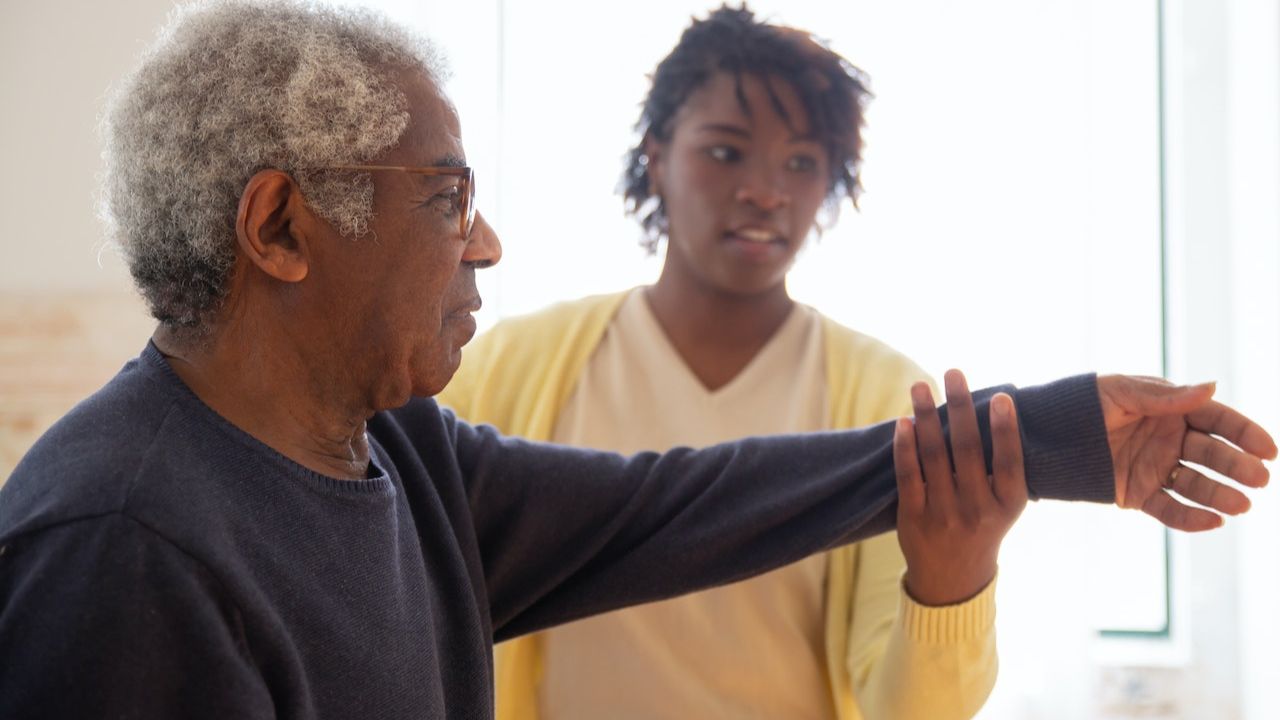
- Improved muscle strength and tone
- Increased flexibility and range of motion
- Enhanced cardiovascular health
- Better balance and coordination
Chair exercises can be tailored to suit individual needs and abilities, making them suitable for people of all ages and fitness levels. They are a convenient option for those who are unable to engage in traditional forms of exercise due to physical limitations.
Walking and Hiking for Endurance
Walking and hiking for endurance can help individuals improve their cardiovascular fitness and build endurance levels. These activities are not only beneficial for physical health but also for mental well-being.
Walking techniques, such as brisk walking or power walking, can increase heart rate, improve lung capacity, and burn calories. On the other hand, hiking offers additional benefits by challenging the body on various terrains, which can enhance balance and stability.
Hiking also provides an opportunity to connect with nature and reduce stress levels. The freedom of walking and hiking allows individuals to explore different routes and discover new places, making it an enjoyable and versatile exercise routine.
Whether it's a leisurely stroll or a challenging mountain hike, incorporating walking and hiking into a fitness routine can lead to improved endurance and overall health.
Cycling for Cardiovascular Health
Cycling is an effective and efficient way to improve cardiovascular health, as it provides a low-impact aerobic workout that can significantly increase heart rate and strengthen the heart muscle. Whether you are a seasoned cyclist or a beginner, incorporating cycling into your fitness routine can have numerous benefits for both your physical and mental well-being.
Here are some key reasons why cycling is a great choice for improving cardiovascular health:
- Cycling for weight loss: Cycling is a fantastic way to burn calories and shed unwanted pounds. It is a low-impact exercise that can be easily adjusted to match your fitness level, making it suitable for individuals of all ages and abilities.
- Cycling for joint health: Unlike high-impact exercises like running, cycling puts minimal stress on the joints. This makes it an excellent option for individuals with joint pain or conditions like arthritis, as it can help improve joint mobility and reduce inflammation.
- Improved lung capacity: Cycling gets your heart pumping and your lungs working, improving your overall lung capacity and respiratory function.
- Mental well-being: Cycling not only benefits your physical health but also your mental well-being. It can help reduce stress, improve mood, and increase overall happiness levels.
Incorporating cycling into your fitness routine can provide a multitude of benefits, including improved cardiovascular health, weight loss, joint health, and mental well-being. So why not hop on a bike and start reaping the rewards of this enjoyable and effective exercise?
Stretching and Flexibility Exercises
One of the key benefits of incorporating stretching and flexibility exercises into your fitness routine is the improvement in joint mobility and muscle flexibility. Stretching exercises help to elongate and strengthen muscles, which can reduce the risk of injury and improve overall physical performance.
Additionally, regular stretching can help alleviate muscle tension and promote relaxation, leading to a greater sense of well-being. For individuals experiencing back pain, specific yoga poses can provide targeted relief and promote spinal health.
Yoga poses such as cat-cow, child's pose, and downward facing dog can help stretch and strengthen the muscles in the back, providing relief from discomfort. Overall, the benefits of stretching exercises extend beyond physical fitness, as they contribute to increased flexibility, improved posture, and enhanced overall quality of life.
Balance and Stability Training
During a fitness routine, incorporating balance and stability training exercises is crucial for maintaining proper body alignment and preventing falls as we age. These techniques not only enhance physical performance, but also promote independence and freedom in our daily lives.
Here are some key balance and stability techniques to consider:
Single-leg stance: Standing on one leg challenges our body's balance and stability, improving overall coordination and strength.
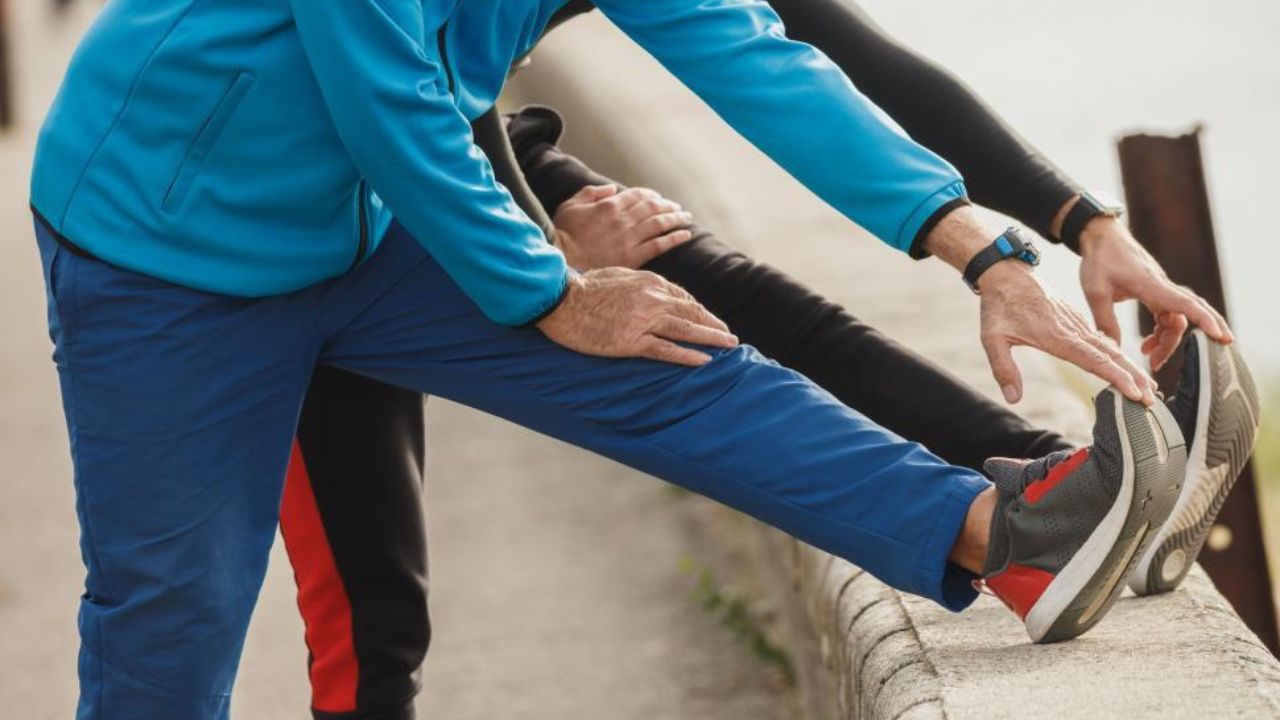
Tai Chi: This ancient Chinese martial art combines slow, flowing movements with deep breathing, promoting relaxation and balance.
Yoga: Practicing yoga poses helps improve flexibility, strength, and balance, reducing the risk of falls.
Proprioceptive exercises: These exercises focus on body awareness and control, improving balance and stability.
Incorporating these falls prevention strategies into our fitness routine can greatly enhance our well-being and ensure a greater sense of freedom as we age. By prioritizing balance and stability, we can maintain our mobility and independence, allowing us to fully enjoy our golden years.
Frequently Asked Questions
Can I Do These Exercises if I Have a Health Condition or Limited Mobility?
Individuals with health conditions or limited mobility can still participate in age-friendly fitness routines by adapting exercises and making modifications. Consult with a healthcare professional or fitness trainer to create a personalized exercise plan that suits your needs and ensures safety.
How Often Should I Be Doing These Exercises to See the Benefits?
The frequency of exercise and the importance of consistency are key factors in seeing the benefits of these age-friendly fitness routines. By adhering to a regular schedule, individuals can maximize the positive impact on their health and well-being.
Is It Necessary to Consult With a Healthcare Professional Before Starting These Fitness Routines?
Consultation with a healthcare professional before starting fitness routines can provide valuable benefits. They can assess your individual health needs, provide guidance on alternative exercises, and ensure you have a safe and effective fitness plan tailored to your golden years.
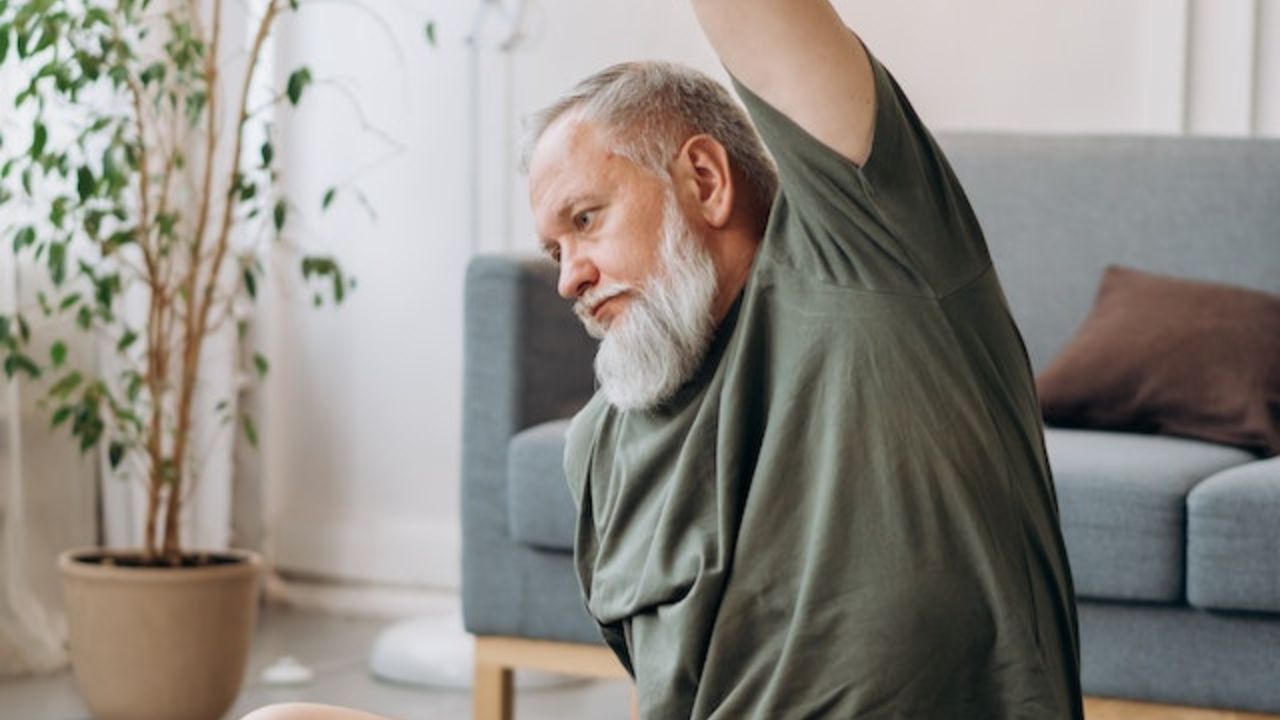
Are There Any Age Restrictions for Participating in These Exercises?
Age restrictions for participating in these exercises vary depending on individual health conditions and fitness levels. Exercise modifications can be made to accommodate different age groups, ensuring the benefits of low impact workouts are accessible to all.
Can I Do These Exercises at Home Without Any Equipment?
Yes, you can do a variety of home exercises without any equipment. There are numerous equipment-free workouts available that can help you stay active and maintain your fitness at home.
Conclusion
In conclusion, engaging in age-friendly fitness routines can greatly enhance the golden years by improving cardiovascular health, strength, flexibility, balance, and overall well-being.
Low-impact cardiovascular exercises, strength training, yoga, pilates, tai chi, walking, hiking, cycling, stretching, and balance and stability training are all beneficial activities for seniors.
By incorporating these exercises into their daily routine, seniors can maintain a healthy and active lifestyle, promote longevity, and enjoy a higher quality of life.
 Mobility trainingHome Fitness RecoverySports Injury PreventionPersonal Physical TherapyOrthopedic SolutionsPrivacy PolicyTerms And Conditions
Mobility trainingHome Fitness RecoverySports Injury PreventionPersonal Physical TherapyOrthopedic SolutionsPrivacy PolicyTerms And Conditions
